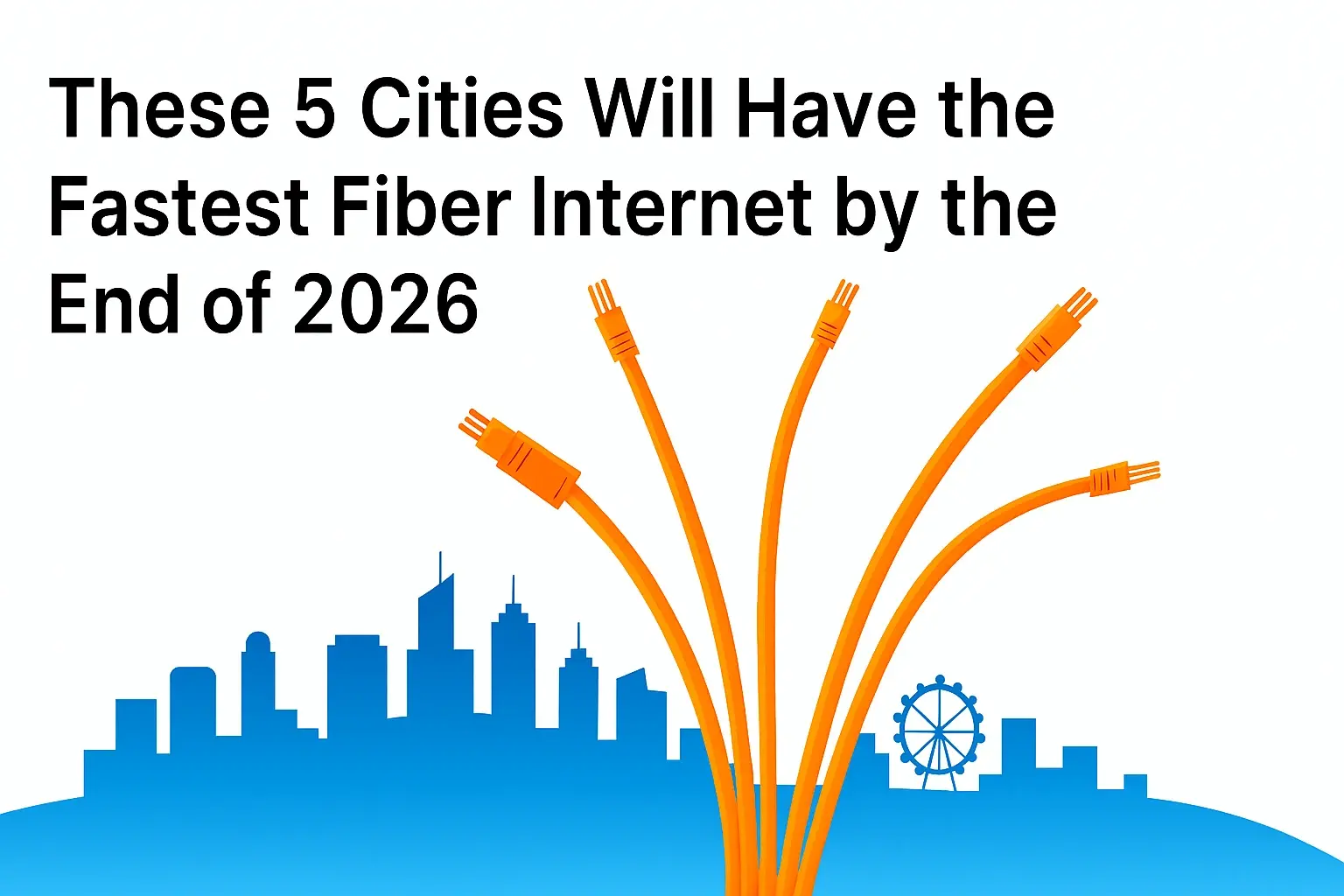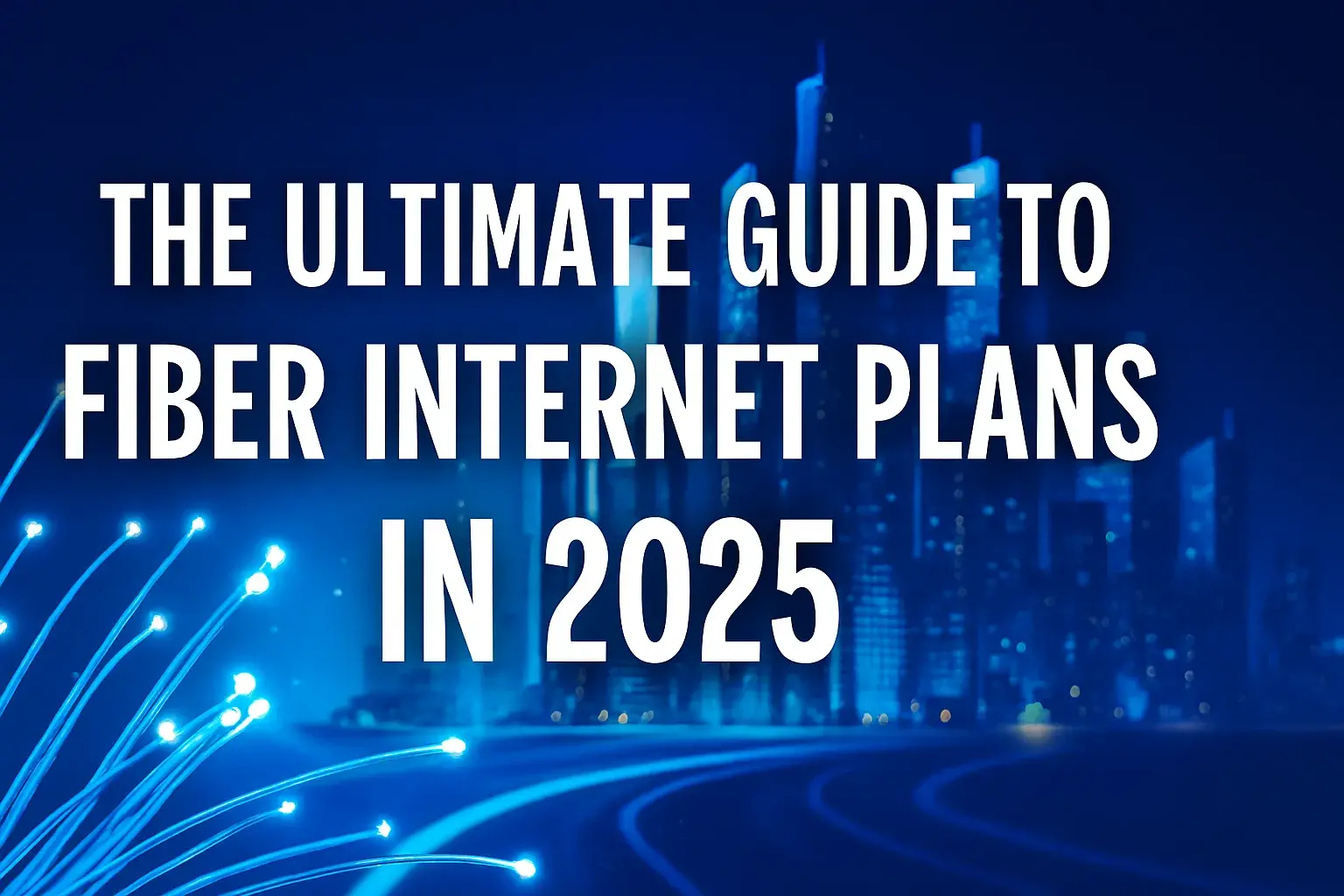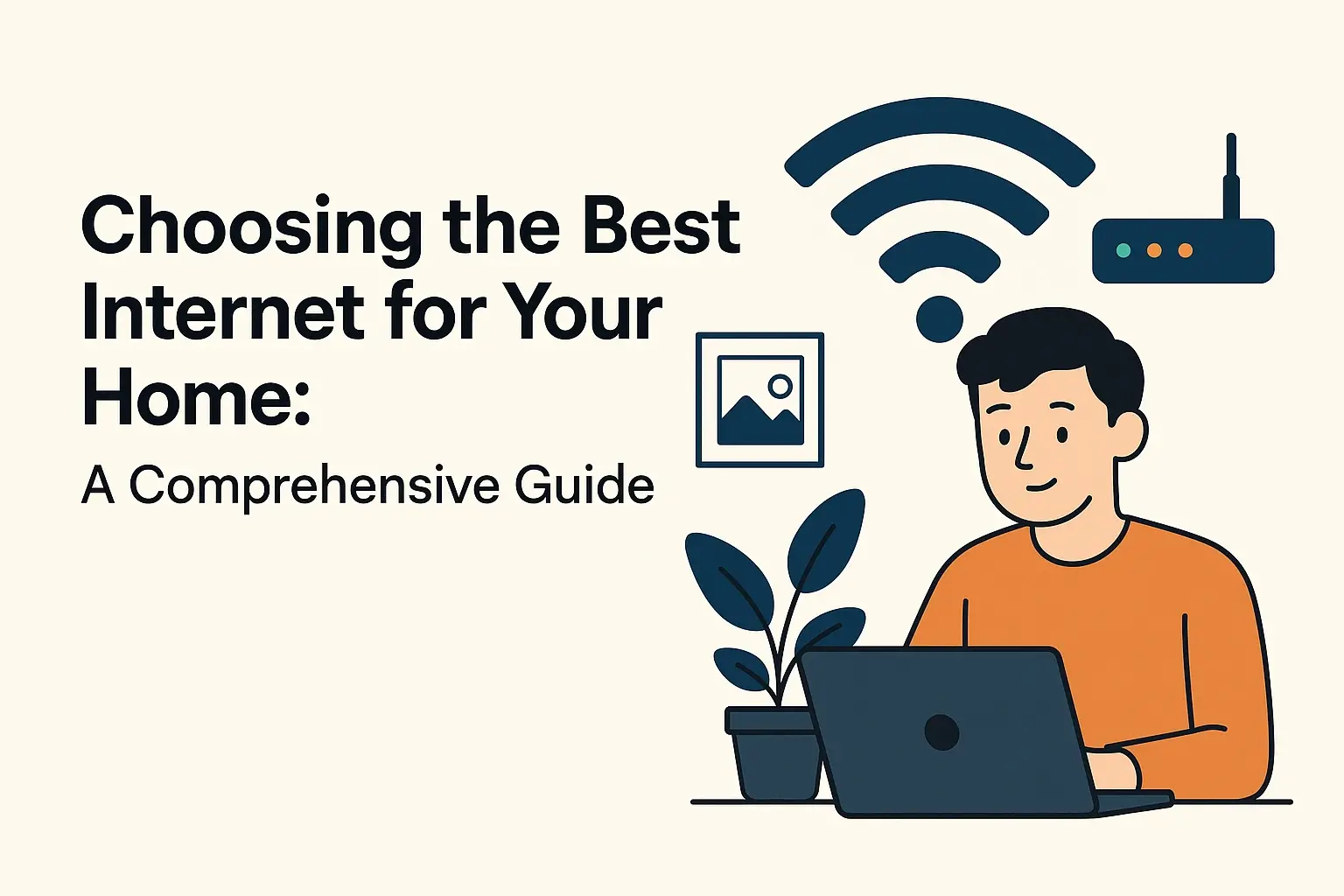Why is fibre not available in my area?

Discover why high-speed fibre optic internet might still be a distant dream for your neighbourhood. This comprehensive guide delves into the complex reasons behind fibre rollout limitations, offering clarity and actionable insights for homeowners and businesses alike seeking better connectivity.
Understanding Fibre Optic Internet Rollout
Fibre optic internet, often lauded as the pinnacle of broadband technology, promises unparalleled speeds, lower latency, and greater reliability. Unlike traditional copper-based DSL or cable internet, fibre uses thin strands of glass or plastic to transmit data as light pulses, enabling speeds that can reach gigabits per second. This revolutionary technology is the backbone of modern digital communication, supporting everything from high-definition streaming and online gaming to remote work and advanced cloud computing. However, the dream of ubiquitous fibre connectivity remains just that for many – a dream. The question "Why is fibre not available in my area?" is a common lament, stemming from a complex interplay of economic, infrastructural, regulatory, and geographical factors. Understanding these elements is crucial to grasping the pace and pattern of fibre deployment.
The rollout of fibre optic networks is not a simple matter of flipping a switch. It involves significant investment, extensive planning, and complex engineering. Internet Service Providers (ISPs) must consider the cost of laying new cables, often requiring trenching or aerial installation, which can be disruptive and expensive, especially in established neighbourhoods or remote regions. Furthermore, the decision to deploy fibre in a particular area is a business one, heavily influenced by the potential return on investment. This means that areas with higher population density, greater affluence, or significant business activity are often prioritized over rural or less economically vibrant locales.
In 2025, the landscape of fibre deployment continues to evolve. While government initiatives and private investment are pushing for wider access, the inherent challenges remain. This article aims to provide a comprehensive overview of why fibre might not yet be reaching your doorstep, exploring the multifaceted reasons behind this common connectivity gap. We will dissect the financial incentives, the physical barriers, the bureaucratic hurdles, and the demographic considerations that shape where and when fibre internet becomes a reality.
The Economic Landscape: Why Cost is King
The primary driver behind fibre optic deployment, or the lack thereof, is overwhelmingly economic. The sheer cost associated with building a fibre network is astronomical, making it a significant barrier for both ISPs and, indirectly, for consumers in less profitable areas.
The High Cost of Fibre Deployment
Laying fibre optic cables is a capital-intensive undertaking. The process typically involves:
- Trenching and Civil Works: Digging trenches to lay underground cables is the most common method. This requires permits, specialized equipment, and labour, and can be extremely disruptive to existing infrastructure and daily life. In 2025, the cost of trenching can range from $20 to $100 per linear foot, depending on soil conditions, terrain, and the need to navigate existing utilities.
- Aerial Deployment: While sometimes less disruptive, attaching fibre cables to existing utility poles also incurs costs. This involves pole access agreements with utility companies, which can be expensive and time-consuming to negotiate.
- Material Costs: The fibre optic cables themselves, along with the necessary conduits, connectors, and splicing equipment, represent a substantial material expense.
- Labour and Expertise: Skilled technicians are required for the installation, splicing, and testing of fibre optic networks, adding to the overall project cost.
Return on Investment (ROI) Calculations
ISPs are businesses, and their investment decisions are guided by the potential for profit. They conduct extensive market research to determine the viability of deploying fibre in a given area. Key factors influencing ROI include:
- Customer Density: Areas with a high concentration of potential subscribers (homes and businesses) offer a larger customer base, spreading the fixed infrastructure costs over more users and increasing the potential revenue. A rural area with only a few homes per square mile is far less attractive than a dense urban or suburban neighbourhood.
- Average Revenue Per User (ARPU): ISPs estimate the average monthly revenue they can expect from each subscriber. If the projected ARPU in an area is too low to recoup the substantial upfront investment within a reasonable timeframe, deployment is unlikely.
- Competition: The presence of existing, albeit slower, broadband services can impact the demand for new fibre. If customers are content with their current DSL or cable speeds and prices, ISPs may hesitate to invest in fibre if they believe they won't capture a significant market share.
- Affordability of Services: While fibre offers superior speeds, it often comes at a higher price point. ISPs assess whether the target demographic in an area can afford premium fibre services.
The "Fibre Divide" Between Urban and Rural Areas
This economic reality has created what is often termed the "fibre divide." Urban and suburban areas, with their higher population density and greater business activity, are generally more attractive for fibre deployment because the ROI is more predictable and achievable. Rural and remote areas, on the other hand, often suffer from low population density, making the cost per subscriber prohibitively high. For instance, a 2025 report by the Federal Communications Commission (FCC) indicated that while over 80% of urban households have access to fibre, the figure drops to below 30% in rural communities. This disparity is a direct consequence of the economic equation of fibre deployment.
Government Subsidies and Incentives
Recognizing the economic challenges, governments worldwide have implemented various subsidy programs and incentives to encourage fibre deployment in underserved areas. These can include grants, tax breaks, or low-interest loans for ISPs. However, the effectiveness and reach of these programs vary significantly by region. In 2025, many such initiatives are ongoing, but the sheer scale of the investment required means that even with subsidies, some areas may remain economically unviable for private sector-led fibre builds. The application process for these funds can also be complex and time-consuming, further slowing down deployment.
| Factor | Impact on Fibre Deployment | Example Scenario |
|---|---|---|
| Customer Density | Higher density = Lower cost per subscriber = More attractive | Dense city suburb vs. scattered rural farms |
| ARPU Potential | Higher ARPU = Faster ROI = More attractive | Affluent neighbourhood vs. low-income area |
| Infrastructure Cost | Higher cost (e.g., rocky terrain) = Slower deployment | Urban street vs. mountainous region |
| Government Incentives | Availability & generosity = Can offset costs | Area eligible for broadband grant vs. no subsidies |
Infrastructure Hurdles: Digging Deep for Connectivity
Beyond the financial considerations, the physical act of deploying fibre optic networks presents a formidable set of infrastructure challenges. These are not just about laying new cables but also about navigating and integrating with existing underground and overhead systems.
Existing Infrastructure and Dig-Once Policies
Many established communities were built long before fibre optics were a consideration. This means that existing underground infrastructure – power lines, water pipes, gas lines, and older communication cables – can make trenching difficult and risky. The process of digging requires meticulous planning to avoid damaging these vital services. In some regions, "dig-once" policies are encouraged, where any time an area is dug up for roadwork or utility maintenance, provisions are made to lay conduit for future fibre deployment. However, these policies are not universally adopted or enforced, and their effectiveness depends on coordination between various utility companies and municipal authorities.
Navigating Complex Underground Networks
Locating and identifying existing underground utilities is a critical first step. In older areas, records may be incomplete or inaccurate, increasing the risk of accidental damage. Hitting a power line or water main can not only cause significant disruption and costly repairs but also pose serious safety hazards. This complexity adds time and expense to the planning and execution phases of fibre installation.
Aerial vs. Underground Deployment
The choice between aerial and underground deployment has its own set of challenges:
- Aerial: While seemingly simpler, it requires access to utility poles, which are often owned by other companies (e.g., power companies). Negotiating pole attachment agreements can be a lengthy and costly process. Additionally, aerial cables are more susceptible to damage from weather events like storms, high winds, and falling trees.
- Underground: This method is more aesthetically pleasing and resilient to weather, but it is significantly more expensive and disruptive due to trenching. The cost of digging can be amplified by rocky terrain, dense urban environments with heavy traffic, or the need to cross private property.
The Role of Local Utilities and Municipalities
Local utility companies and municipal governments play a crucial role in fibre deployment. ISPs must obtain numerous permits for digging, road closures, and right-of-way access. The permitting process can be bureaucratic and slow, with varying regulations and fees from one municipality to another. In some cases, local governments may even own their own conduit infrastructure, which ISPs can lease, potentially reducing deployment costs. However, this is not a widespread model. The level of cooperation and efficiency from these entities can significantly impact the speed and feasibility of fibre rollouts.
The Challenge of Dense Urban Environments
While urban areas are generally prioritized due to population density, they also present unique infrastructure challenges. Congested streets, limited space for digging, and the sheer volume of existing underground utilities make installation complex and expensive. Retrofitting fibre into older, densely packed city centres can be more challenging than building in newer suburban developments.
Rural Infrastructure Gaps
In rural areas, the challenge is often the *lack* of existing infrastructure. There may be no utility poles to attach to, and the vast distances between homes make trenching prohibitively expensive. In such cases, alternative technologies like fixed wireless or satellite internet might be deployed first, leaving fibre deployment as a much longer-term prospect.
| Deployment Type | Pros | Cons | Infrastructure Impact |
|---|---|---|---|
| Underground (Trenching) | Aesthetically pleasing, weather resilient | Expensive, disruptive, complex utility avoidance | Requires significant civil works, permits, utility coordination |
| Aerial (Pole Attachment) | Less disruptive, potentially faster deployment | Vulnerable to weather, requires pole access agreements | Dependent on existing pole infrastructure and agreements |
Navigating the Regulatory Maze
The deployment of any large-scale infrastructure project, including fibre optic networks, is heavily influenced by regulatory frameworks and government policies. These can either facilitate or hinder the process, directly impacting why fibre might not be available in certain areas.
Permitting Processes and Bureaucracy
Obtaining the necessary permits to lay fibre optic cables is often a complex and time-consuming ordeal. ISPs need permits from multiple levels of government – federal, state/provincial, and local – as well as from various utility owners. Each jurisdiction may have its own unique set of regulations, fees, and application procedures. This bureaucratic labyrinth can add months, or even years, to a project timeline. For example, in 2025, some municipalities are streamlining these processes, while others remain notoriously slow, creating significant delays for fibre rollouts.
Right-of-Way Access
Accessing public rights-of-way (e.g., streets, sidewalks, utility easements) is essential for deploying fibre. Regulations governing this access vary widely. Some jurisdictions have standardized, fair access policies, while others impose restrictive or costly conditions. In areas where private property must be crossed, obtaining easements from individual landowners can be a lengthy and sometimes contentious process.
Franchise Agreements
In many regions, particularly for cable and internet services, ISPs must enter into franchise agreements with local governments. These agreements grant the ISP the right to use public rights-of-way to provide services within the municipality. The terms of these agreements can include fees, service level commitments, and requirements for network build-out. Negotiating these agreements can be a significant hurdle, especially if the municipality has specific demands or if the ISP is a new entrant.
Competition and Local Monopolies
Regulatory policies can also influence the competitive landscape. In some areas, a single incumbent ISP may hold a de facto monopoly due to historical infrastructure advantages or favorable regulatory treatment. This can make it difficult for new fibre providers to enter the market and invest in new infrastructure, as they face entrenched competition. Policies aimed at promoting competition, such as municipal broadband initiatives or open-access networks, can help, but their implementation is often met with significant lobbying efforts from incumbent providers.
Government Funding and Broadband Initiatives
Conversely, government funding and targeted broadband initiatives can accelerate fibre deployment. Programs designed to bring high-speed internet to underserved rural or low-income areas can significantly offset the high costs. However, the availability, eligibility criteria, and funding levels of these programs vary greatly. For instance, the Bipartisan Infrastructure Law in the United States, enacted in 2021 and continuing its impact in 2025, allocates billions for broadband deployment, but the distribution and effectiveness of these funds are subject to state and local planning and execution.
Spectrum Allocation (for Wireless Alternatives)
While this article focuses on fibre, it's worth noting that regulatory policies around spectrum allocation for fixed wireless services can also influence connectivity options. In areas where fibre is uneconomical, robust fixed wireless networks might be a viable alternative. However, the availability of suitable spectrum can be a bottleneck, controlled by government regulators.
Digital Equity and Inclusion Policies
Increasingly, policymakers are focusing on digital equity and inclusion. This means ensuring that all citizens, regardless of income, location, or background, have access to affordable, reliable internet. These policies can drive investment in areas that might otherwise be overlooked due to purely economic considerations, but their impact is often long-term and dependent on sustained political will and funding.
Location, Location, Location: Geography and Demographics
The physical characteristics of an area and the nature of its population play a pivotal role in determining fibre availability. These factors directly influence the cost and complexity of deployment, as well as the potential market for services.
Population Density and Distribution
As previously touched upon, population density is a critical factor.
- High Density (Urban/Suburban): More homes and businesses within a smaller geographic area mean that the cost of laying fibre to each potential customer is lower. This makes these areas prime candidates for fibre deployment.
- Low Density (Rural/Remote): A few homes scattered over a large area significantly increase the cost per subscriber. The distance between potential customers makes it economically challenging for ISPs to justify the investment in laying fibre. For example, in 2025, extending fibre to a single farmstead miles from the nearest road can cost tens of thousands of dollars.
Terrain and Geography
The physical landscape can present significant engineering challenges and cost increases.
- Flat, Open Areas: Relatively easy to trench and lay fibre.
- Hilly or Mountainous Regions: Trenching becomes much more difficult and expensive due to rock, steep inclines, and the need for specialized equipment. Aerial deployment might be an option, but can also be complicated by terrain and tree cover.
- Water Crossings: Laying fibre across rivers, lakes, or other bodies of water requires specialized, costly techniques like micro-trenching or directional drilling, significantly increasing project expenses.
- Environmentally Sensitive Areas: Deployment in national parks, protected habitats, or areas with strict environmental regulations can be subject to lengthy review processes and may require more expensive, less invasive installation methods.
Demographics and Socioeconomic Factors
The characteristics of the population in an area also influence deployment decisions:
- Income Levels: Areas with higher average household incomes are more likely to be able to afford premium fibre services. ISPs assess the potential for revenue based on the purchasing power of the local population.
- Age of Housing Stock: Newer developments often have underground conduits pre-installed during construction, making fibre deployment simpler. Older neighbourhoods with established infrastructure can be more challenging and costly to upgrade.
- Business Presence: Areas with a strong concentration of businesses, particularly those requiring high bandwidth (e.g., tech companies, data centres), can create a strong business case for fibre deployment, as businesses are often willing to pay a premium for reliable, high-speed connectivity.
Existing Broadband Penetration and Performance
The current state of broadband in an area also matters. If an area is already well-served by a competitor offering decent speeds at a reasonable price, a new fibre provider might struggle to gain market share, impacting their ROI projections. Conversely, areas with very poor existing service might be seen as having higher unmet demand, making them more attractive, provided the economic factors align.
The Impact on Connectivity Equity
These geographical and demographic factors often exacerbate existing inequalities. Rural communities, often characterized by lower population density and lower average incomes, are disproportionately affected by the lack of fibre availability. This creates a digital divide where those in more affluent or densely populated areas benefit from advanced internet services, while others are left behind, impacting their access to education, employment, healthcare, and economic opportunities. In 2025, addressing this connectivity equity remains a significant challenge for policymakers and ISPs.
| Factor | Impact on Fibre Availability | Why it Matters |
|---|---|---|
| Population Density | Low density = High cost per subscriber | Economic viability is directly tied to the number of potential customers in an area. |
| Terrain | Difficult terrain (rocky, mountainous) = Higher installation costs | Increases engineering complexity and labour/equipment expenses. |
| Income Levels | Lower income = Lower perceived market for premium services | Affects the potential revenue an ISP can generate from an area. |
| Age of Infrastructure | Older infrastructure = More complex and costly upgrades | Retrofitting fibre into established areas is harder than new builds. |
The Technical and Operational Backbone
Beyond the immediate physical and economic hurdles, the technical and operational aspects of building and maintaining a fibre network add another layer of complexity that influences availability.
Network Design and Planning
Designing a fibre network is a sophisticated process. It involves determining the optimal routes for cables, the placement of distribution points (like street cabinets), and the capacity required to serve anticipated demand. This requires detailed mapping, traffic analysis, and engineering expertise. Errors in design can lead to inefficient use of resources, higher costs, and limitations on future expansion. In 2025, advanced network simulation tools are used, but the foundational planning remains a significant undertaking.
Last-Mile Connectivity
The most challenging and expensive part of any network build is the "last mile" – the connection from the network's distribution point to individual homes or businesses. This is where fibre deployment often falters, especially in less dense areas. Laying individual fibre lines to each premises requires significant labour and coordination. ISPs must decide whether to deploy fibre to the premises (FTTP), which offers the highest speeds, or fibre to the curb/building (FTTC/FTTB), which might be a more cost-effective compromise.
Maintenance and Repair
Fibre optic cables, while robust, are not indestructible. They can be damaged by digging accidents, extreme weather, rodents, or even vandalism. Repairing fibre optic lines requires specialized equipment and highly trained technicians. The cost and logistical challenges of maintaining a widespread fibre network, especially in remote or difficult-to-access areas, are significant ongoing operational expenses that ISPs must factor into their deployment decisions.
Technological Evolution and Obsolescence
The telecommunications industry is constantly evolving. While fibre is the current gold standard, ISPs must consider future technological advancements. Investing heavily in a specific fibre architecture today might lead to obsolescence if a newer, more efficient technology emerges. This can make ISPs more cautious about large, long-term investments, particularly in areas where the return is marginal.
The Role of Technology Providers and Equipment
The availability and cost of specialized equipment for fibre deployment, such as splicing machines, testing devices, and optical network terminals (ONTs) for homes, also play a role. Supply chain issues or high costs for this equipment can impact project timelines and budgets.
Spectrum Availability for Wireless Alternatives
While not directly fibre, it's important to note that in areas where fibre is unavailable, alternative technologies like fixed wireless access (FWA) are often deployed. The availability of suitable radio spectrum for FWA is regulated and can be a bottleneck. If spectrum is scarce or expensive, FWA deployment might also be limited, leaving some areas with few high-speed options.
The Interplay with Existing Technologies
ISPs must also consider how new fibre networks will interact with or replace existing infrastructure. This includes decommissioning older copper networks, which has its own set of costs and regulatory considerations. The transition strategy can impact the overall deployment plan and associated costs.
Taking Action: What You Can Do About It
While the reasons for fibre unavailability are complex, there are proactive steps individuals and communities can take to advocate for and potentially accelerate fibre deployment in their area.
1. Understand Your Current Broadband Options
Before advocating for fibre, know what you currently have. Research the speeds and reliability of your existing internet service. Websites like Speedtest.net can help you measure your current performance. Understanding your needs and limitations is the first step.
2. Gauge Community Interest and Demand
Fibre deployment is driven by economics. High demand makes an area more attractive to ISPs.
- Talk to your neighbours: Discuss the desire for better internet. A collective voice is much stronger than an individual one.
- Organize a survey: Create a simple survey (online or paper) to gauge interest in fibre, current satisfaction levels, and willingness to switch providers.
- Form a community group: A dedicated group can channel community efforts more effectively.
3. Contact Your Internet Service Providers (ISPs)
Directly express your interest to the ISPs that operate in your region, and even those that don't.
- Inquire about future plans: Ask them directly if there are any plans for fibre deployment in your specific neighbourhood.
- Provide feedback: Let them know that fibre availability is a deciding factor for you and potentially many others.
- Highlight business demand: If you represent a business or know of businesses that require high-speed internet, mention this to ISPs.
4. Engage with Local Government and Officials
Local authorities often have influence over infrastructure development and can advocate for better broadband access.
- Contact your city council or county commissioners: Express your concerns about internet availability and its impact on education, work, and local economy.
- Attend public meetings: Voice your opinions during town hall meetings or public forums where infrastructure and economic development are discussed.
- Advocate for "Dig Once" policies: Encourage your local government to adopt and enforce "dig once" policies, which streamline future fibre deployment.
- Explore municipal broadband: Inquire about the feasibility of municipal broadband initiatives in your area. While complex, these can sometimes be a solution where private ISPs are unwilling to invest.
5. Research Government Funding and Grants
Governments at various levels often offer grants and subsidies to encourage broadband expansion in underserved areas.
- Check federal, state, and local broadband initiatives: Look for programs designed to fund infrastructure upgrades. For example, in the US, the FCC's BroadbandUSA website provides resources.
- Support local applications: If your area is applying for such grants, lend your support through letters of endorsement or participation in community consultations.
6. Consider Alternative Technologies
While fibre is the ultimate goal, explore other high-speed options if fibre is not immediately available.
- Fixed Wireless Access (FWA): This technology uses radio waves to connect homes to a broadband network, often from a nearby tower. Speeds can be competitive with fibre in some cases.
- Satellite Internet: While historically slower and more prone to latency, newer satellite constellations (like Starlink) are offering significantly improved performance, especially in very remote areas where other options are nonexistent.
7. Stay Informed and Persistent
The landscape of internet infrastructure is constantly changing. Stay informed about new developments, ISP plans, and government initiatives. Persistence is key. Continued advocacy and demonstrated demand can eventually influence deployment decisions. The journey to fibre availability might be long, but collective action and informed engagement can make a difference.
| Action Area | Specific Steps | Potential Impact |
|---|---|---|
| Community Engagement | Talk to neighbours, conduct surveys, form groups | Demonstrates demand, strengthens advocacy efforts |
| ISP Outreach | Inquire about plans, provide feedback | Informs ISPs of market interest, potentially influences future planning |
| Local Government Advocacy | Contact officials, attend meetings, support policies | Influences local infrastructure decisions, permits, and potential municipal initiatives |
| Research Funding | Identify and support applications for broadband grants | Can directly fund fibre deployment in underserved areas |
Conclusion
The absence of fibre optic internet in your area is rarely due to a single factor. It is the culmination of intricate economic realities, substantial infrastructural challenges, complex regulatory environments, and specific geographical and demographic conditions. ISPs must balance the immense cost of deploying fibre with the potential return on investment, often prioritizing densely populated or commercially significant areas. The physical act of digging and laying cables, navigating existing utilities, and securing permits adds layers of complexity and expense, particularly in older or more remote locations. Furthermore, government policies, while sometimes aimed at bridging the digital divide, can be slow to implement or insufficient to overcome the inherent economic barriers.
Understanding these multifaceted reasons is crucial for managing expectations and for engaging in constructive advocacy. While the situation can be frustrating, remember that collective action, informed engagement with ISPs and local government, and persistent advocacy can indeed influence the pace of fibre deployment. By gauging community interest, voicing your needs, and supporting initiatives aimed at expanding broadband access, you can contribute to bringing high-speed fibre connectivity to your doorstep. Stay informed, stay engaged, and be part of the solution to bridge the digital divide in your community.





